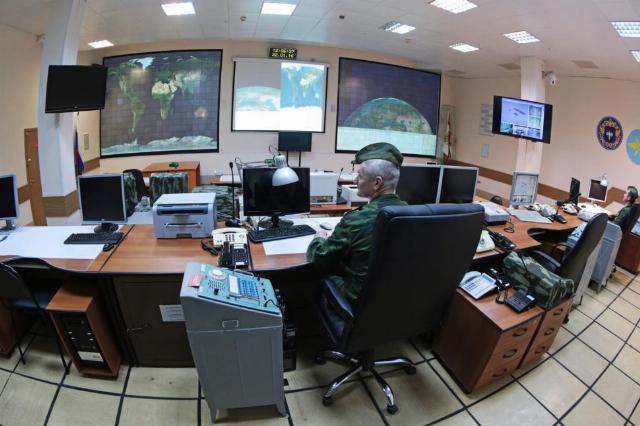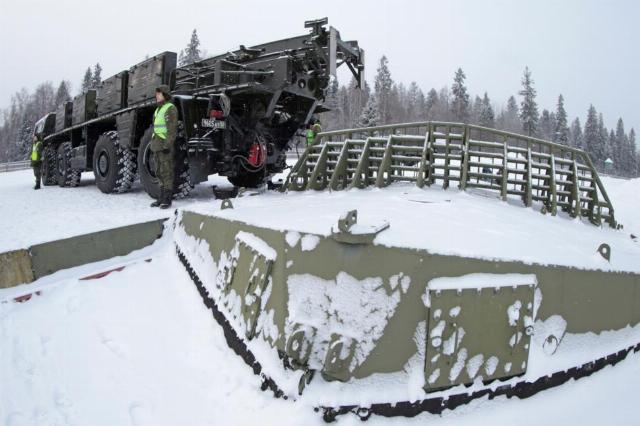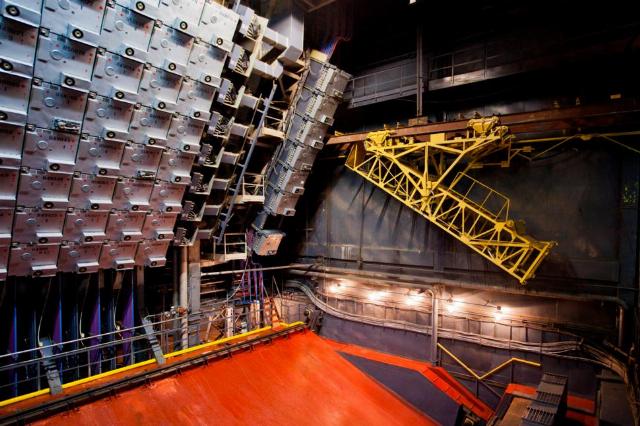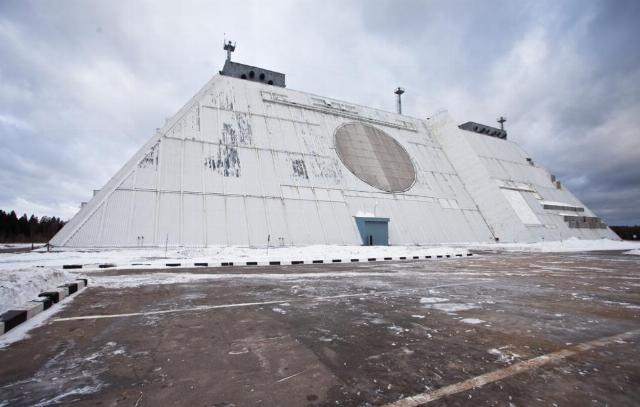On February 17, 1995, in accordance with a special decree of the President of the Russian Federation, the A-135 missile defense system of the Moscow Industrial Region was put into service. For 30 years now, it has been guarding Russia's aerospace borders, protecting Moscow from a ballistic missile strike. Its radar is capable of examining a five-centimeter ball at a distance of over 1,500 km.
Through the difficulties to the decision on the creation of the A-135 missile defense system
The idea of creating the A-135 system was formed in the late 1960s. By this time, Soviet specialists were in a leading position in the missile defense competition that had unfolded between the USSR and the United States — which turned out to be unprecedentedly difficult and one of the most expensive in the Cold War. This was evidenced by the successful tests of the experimental "A" system, during which 11 long-range ballistic missile warheads were intercepted (the first of the interceptions took place on March 4, 1961), the deployment of the A-35 system, research into the creation of fundamentally new missile defense systems, and so on.
However, at the same time, the developers of missile defense systems faced an actual devaluation of the enormous work they had done. It turned out that the methods proposed by the developers for intercontinental ballistic missiles to counter missile defense by using separable individually guided warheads and masking them with false targets are simpler and disproportionately cheaper than the technologies of selection (unmasking and selection for the destruction of missile warheads) of ballistic targets. That is, the new method confused the anti-missile system, and it did not understand which of the many detected targets it needed to shoot down. After considering a huge number of methods, the use of the natural selective properties of the atmosphere was recognized as practically the only more or less effective and sustainable method of breeding. This is when lighter false targets are slowed down by the atmosphere and lag behind the warheads, which they give themselves away.
In early 1970, the issue of further prospects for the creation of missile defense systems became the subject of a meeting chaired by Secretary of the Central Committee of the CPSU Dmitry Ustinov. The importance of the event is also reflected by its participants — Leonid Smirnov, Chairman of the Military Industrial Complex, Mstislav Keldysh, President of the USSR Academy of Sciences, academicians Anatoly Alexandrov, Alexander Shchukin, Alexander Mints, Commander-in-Chief of the Air Defense Forces Pavel Batitsky, general designers, heads of institutes, and so on.
The conclusions of the meeting were as follows:
- to admit that with the current and long-term predictable state of scientific and technical knowledge, the creation of an effective missile defense system against a massive strike, especially from a missile strike with missile defense systems, is unrealistic;
- Given the crucial role of information about the current state of the rocket and space situation and its changes during a possible military conflict, the development of information components of rocket and space defense - missile attack warning and space control systems - should be considered a priority.;
- In the field of missile defense, focus efforts on creating means of defense against a limited missile strike, equipped with a full range of means of overcoming missile defense.
Anticipating such a development, back in 1968, Valery Kalmykov, Minister of the Radio Industry, instructed a group of prominent scientists and specialists in the field of missile defense under the leadership of Anatoly Bassistov to develop a missile defense concept and draft basic source data for the design of missile defense facilities and systems in the Moscow Industrial Region. The following year, the project was approved by the customer. The plan included the development of a multi—channel firing system (MKSK), consisting of two interception echelons — long-range (trans-atmospheric) and short-range (atmospheric) - and capable of solving the task, taking into account the use of advanced missile defense systems as part of the target. As a result, on June 10, 1971, the country's leadership commissioned the development of the A-135 missile defense system, the Amur long-range interception firing complex and its Amur-P range model.

Command and computing center
Image source: © Mikhail Metzel/ TASS
Changes in the system due to the agreement with the USA
In the same year, under the leadership of Bassistov, the enterprises that were part of the Central Scientific Research Institute "Vimpel", with the participation of the MKB "Fakel" and the OKB "Novator", developed a project for the A-135 system and the MKSK "Amur". However, after the signing of the Treaty on the Limitation of Missile Defense Systems with the United States in May 1972, this project required a number of fundamental changes.
So, instead of the originally proposed three Amur ICSCs, the developers had to limit themselves to one, the technical means of which could be located on an area with a diameter of 100 km. This significantly worsened the performance of the A-135 system. At the same time, the approach of the MKSK Amur to the defended facility made it possible to use its radar stations to perform atmospheric selection and target the attacking warheads of short-range interceptors. This simplified the system.
In 1973, a new draft design for the A-135 system and the Amur MSK was approved by the customer and recommended for implementation.
The main elements of the A-135 missile defense system were to be:
- a command and control center (CCP) with computing and control facilities for the missile defense system;
- multifunctional radar station "Don-2N";
- long-range interception missile;
- short-range interception missile.
The approval of the project for the full-scale development of the A-135 system took several years. This was due to both the expected high costs and the limited technical characteristics of the Amur MCC.
Nevertheless, on September 15, 1975, the first working meeting of the commission was held, which was to select the locations of the future system facilities in the Moscow region.
In addition to the 20 permanent members, about 20 specialists from various organizations were additionally involved in the work of the commission. All of them needed to complete a large amount of work in a very short time, with very strict location requirements and in the strictest secrecy. The greatest difficulties were caused by the choice of a position for the Don-2N MRLS — as a result, they decided to build in the Sofrino area.

Launching positions with silo launchers
Image source: © Mikhail Metzel/ TASS
Find every little thing
The resolution of the Central Committee of the CPSU and the Council of Ministers on the beginning of full-scale work on the creation of the A-135 was issued on June 7, 1978. Bassistov was appointed the General Designer of the system, Viktor Sloka became the chief designer of the Don-2N radar, and Mikhail Minasyan, Deputy General Designer, became the main developer of software and algorithmic support and information coordination of the missile defense system with space warning and control systems.
The Don-2N radar, which is unique in its characteristics, is designed to detect ballistic targets, track them, measure coordinates, analyze the composition of complex targets and aim anti-missiles at them. It became the basis of the A-135 system. Don-2N is a tetrahedral truncated pyramid with a height of 33 m and a side length of 130 m at the base and 90 m along the roof. The radar has fixed large-aperture active phased array antennas (on each of the four faces) with a diameter of 18 m, working for reception and transmission. Thus, the viewing area extends over the entire upper hemisphere. Fully digital signal processing has also been implemented for this radar. Its creation has become a scientific, technical and industrial achievement of the world radio industry.

Radiating antenna of the Don-2N radar
Image source: © Ivan Gushchin/ TASS
This was confirmed, for example, during the ODERACS-1 experiment in February 1994, the purpose of which was to determine the ability of Russian and American radars to detect elements of small space debris. During this experiment, special microsatellites were launched into outer space from the cargo hold of the American Discovery spacecraft (flight STS-60) at an altitude of about 350 km: six metal spheres with diameters of 5, 10 and 15 cm. The largest spheres were detected by all the radars involved in the experiment. Those with a diameter of 10 cm were found by only three radars: two Russian and an American radar Cobra Dane (Alaska). And spheres with a diameter of 5 cm could only be detected by the Don-2H radar. In addition, she also plotted the trajectory of their movement at a distance of 1,500 km.
A series of trials
The long-range and short-range interception missiles created for the A-135 system by design teams led by Pyotr Grushin (MKB Fakel) and Lev Lyulyev (OKB Novator) also had unique characteristics.
The construction and deployment of the Amur-P MCSC at the Sary-Shagan test site took place in 1976-1979, and autonomous testing of facilities took place in 1979-1982.
The Amur-P MKSK test range includes the Don-2NP MRLS and a command and computing center, launch positions for long-range and short-range mine-based interceptors, a technical missile training position, and a data and communication transmission system. At the same time, they were spaced up to 100 km apart.
An anti-missile missile on the territory of the Don-2H radar station
Image source: © Mikhail Metzel/ TASS
The unique complexity of the facilities that were part of the Amur-P MCSC, the high cost of field experiments with launches of ballistic target missiles and anti-missiles required increased monitoring of the functioning of the facilities, and extensive use of mathematical and semi-natural modeling.
Preliminary tests of the Amur-P MKSK began in November 1982 and lasted until March 1984. The correctness of the technical solutions included in the design of the MCSC and its facilities was confirmed, and the main technical characteristics were evaluated. The next stage of testing was performed from March to October 1987. Conclusions were drawn about the compliance of the basic characteristics of the Amur-P ICSC with the specified ones and about the possibility of intercepting modern ballistic missiles.
State tests of the A-135 system were started in 1989. At MKSK Amur-P, anti—missile launches were carried out for conditional and real targets - the parameters for them were selected taking into account safety requirements and ensuring an assessment of the characteristics of MKSK facilities at critical, nominal and limit modes. This ultimately made it possible to experimentally confirm the inherent characteristics, obtain a sufficient amount of experimental data to calibrate mathematical and simulation models of the means and correctly evaluate the effectiveness of the A-135 combat system.
Full-scale transport and resource tests of antimissiles, transport and installation machines were carried out, the phenomena of the effects of the gas jet of launching antimissiles on the elements of the launch position and their mutual influence during paired launches with a minimum interval were investigated. Tests for long-term storage of antimissiles were also conducted.
The A-135 state tests at the Amur-P MSCC were successfully completed in 1990. Nevertheless, during this period, experimental work was carried out at the Amur-P MCSC to expand the combat capabilities of the A-135 system, including by reducing the lower and increasing the long-range boundaries of the short-range interception missile, increasing its maneuverability, and equipping it with a new warhead.
Anatoly Bassistov, General Designer of the A-135 missile defense system
In its final form, the A-135 missile defense system of the Moscow Industrial Region was put into service on February 17, 1995.
MGIMO Central Research Institute Expert Vladimir Korovin

